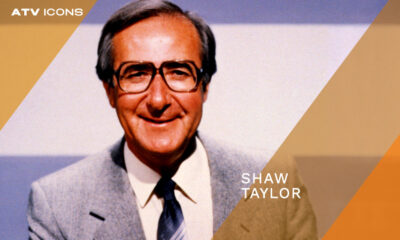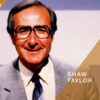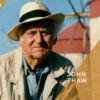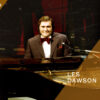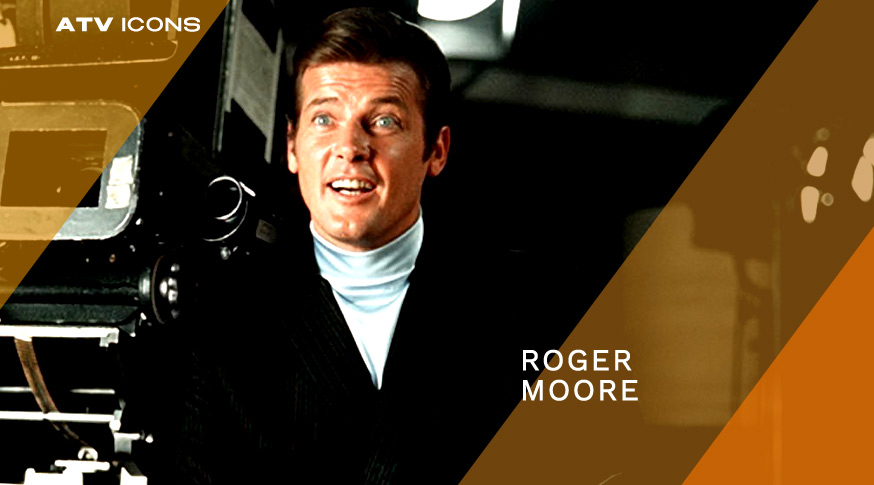
Icons
ATV Icon: Roger Moore
ATV Icons continues to celebrate 70 years of ITV with the induction of Sir Roger Moore…
Sir Roger George Moore was born on 14 October 1927 in Stockwell, London. He was the only child of George Alfred Moore, a police constable stationed at Bow Street, and Lillian “Lily” Pope, a homemaker originally from British India.
Roger grew up in South London and attended Hackford Road Elementary and then Battersea Grammar School as a boy. During World War II he was evacuated to the West Country for safety, spending time at schools in Devon and Cornwall, before finishing his schooling at Dr. Challoner’s Grammar School in Amersham, Buckinghamshire. An artistic child, Moore excelled in drawing and painting and initially aspired to become a commercial artist.
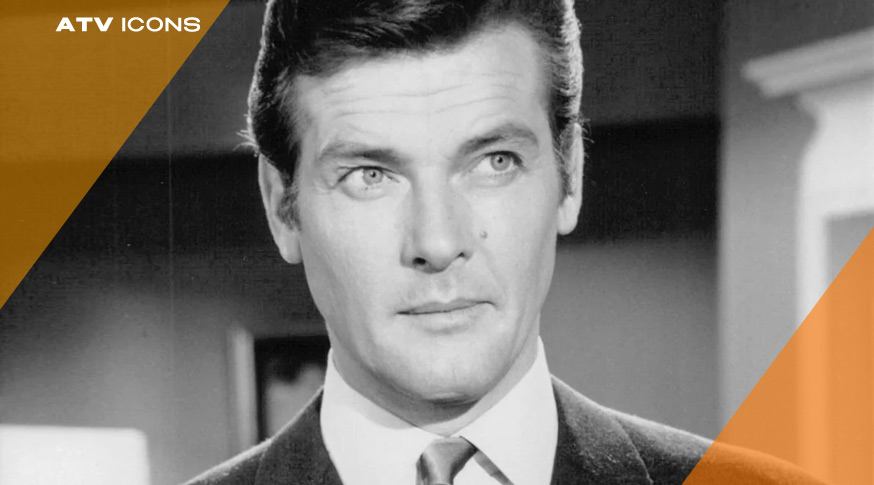
Roger stars in ITC production The Saint, produced at the Elstree TV and Film Studios / ITC/ATV
At age 15, he left formal education and found work at an animation studio, where he served as an apprentice tracer helping create wartime public information films. This stint was short-lived – he was dismissed after a mistake with some animation cels; However, a stroke of luck soon set him on the path to acting. Roger’s father, through a police investigation, met film director Brian Desmond Hurst and mentioned his son’s interest in movies. Hurst took an interest in young Roger and hired him as an extra in the historical epic Caesar and Cleopatra (1945), which starred Vivien Leigh.
Impressed by Moore’s charm – and noting the young extra had already attracted off-camera fan mail – Hurst encouraged him to pursue acting and even paid his tuition to attend the Royal Academy of Dramatic Art (RADA) in London. Roger studied for three terms at RADA, where one of his classmates was Lois Maxwell – the future Miss Moneypenny in the Bond films. He completed his studies at the acting school in 1945 and, shortly after the war’s end, was conscripted for national service in the British Army.
Moore was commissioned as a second lieutenant in 1946 and served with the Royal Army Service Corps, eventually becoming a captain in the Combined Services Entertainment unit, responsible for entertaining the troops in post-war Europe.

Roger Moore as Simon Templar in The Saint / ITC/ATV
Roger Moore’s acting career began in the mid-1940s with minor roles in film and burgeoning television. He made his first credited film appearance in Perfect Strangers (1945), a drama directed by Alexander Korda, and picked up bit parts (often uncredited) in British films such as Piccadilly Incident (1946). In these early post-RADA years, he also gained experience on stage in repertory, including alongside future ITV star Noele Gordon, and even worked as a model – appearing in print ads for knitwear, earning him the tongue-in-cheek nickname “The Big Knit”. By the early 1950s, standing a tall 6’1″ with matinee-idol looks, he was doing well enough in modelling and bit parts to catch the attention of Hollywood scouts.
In 1953, Roger moved stateside to explore television opportunities and soon appeared in anthology series like Robert Montgomery Presents and other live telly dramas. His transatlantic move paid off when, in 1954, he was signed to a seven-year contract by MGM Studios. He made his Hollywood film debut with a small part in The Last Time I Saw Paris (1954) starring Elizabeth Taylor and followed up with roles in the musical biopic Interrupted Melody (1955) and the swashbuckler The King’s Thief (1955).
In 1956, Moore played a lead role opposite Lana Turner in the period drama Diane, portraying Prince Henri of France. Unfortunately, Diane was a critical and commercial flop, and after two years MGM released Moore from his contract, with Moore later joking that at MGM “RGM [Roger George Moore] was NBG [no bloody good]”.
Freelancing once more, Moore guest-starred on various TV shows in the late 1950s, including an episode of Alfred Hitchcock Presents. His first significant breakthrough came on British television when he was cast in the title role of Ivanhoe (1958–1959) for ITV. In this adventure series, based on Sir Walter Scott’s medieval novel, Moore played Sir Wilfred of Ivanhoe, a knight in 12th-century England. The show, produced by ITC/ATV, aimed at younger audiences, ran for 39 half-hour episodes and proved to be his first taste of leading man success. The production was physically demanding – Moore performed many of his own stunts and even cracked some ribs during filming – but it established him as a swashbuckling hero on the small screen.
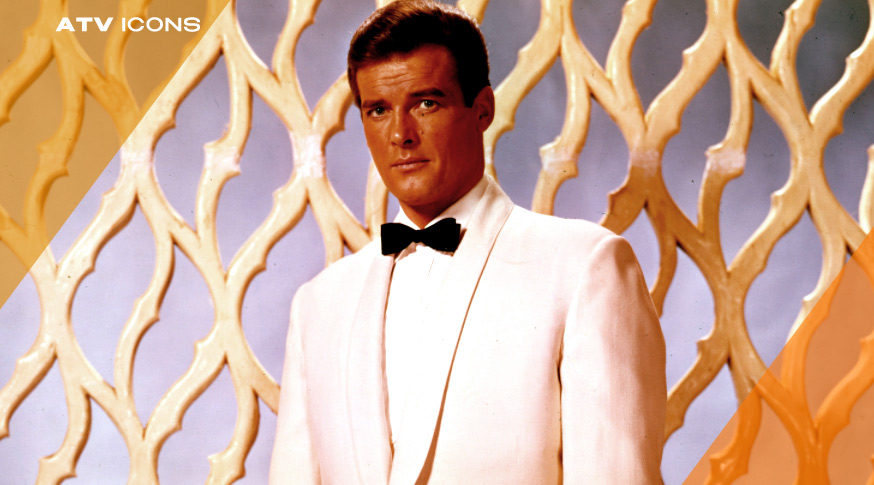
Roger as Simon Templar in The Saint / ITC/ATV
After Ivanhoe, Roger signed a contract with Warner Bros. Television and landed the lead in the ABC/Warner Bros. Western series The Alaskans (1959–1960), playing “Silky” Harris, a frontier gambler during the Klondike Gold Rush. The series ran for 37 episodes and, despite being set in frosty Alaska, was filmed on a hot Hollywood backlot – an experience Moore later described as arduous, made worse by the need to wear heavy fur coats under studio lights.
He candidly called The Alaskans his “most appalling television series,” partly due to the gruelling conditions and behind-the-scenes tensions. Nonetheless, it kept him visible to American audiences. In 1960, Moore transitioned into another Warner Bros. hit show: Maverick. He joined the fourth series (1960–1961) as Beau Maverick, a charming English cousin to the programme’s original protagonist Bret Maverick, replacing departing star James Garner.
In 1962, Roger Moore was cast in the role that would elevate him to global fame: Simon Templar in the ITC/ATV series The Saint. Based on Leslie Charteris’s popular novels, the action series featured Moore as a suave, modern-day Robin Hood-like adventurer who targets criminals while often staying one step ahead of the law. The series was, like many of ATV boss Lord Lew Grade’s shows, produced in Britain for ITV but aimed at an international audience, and Grade specifically wanted Moore’s debonair presence to carry it.
The Saint aired from 1962 to 1969, spanning six series and 118 episodes, and it became an enormous success both in the UK and abroad. By 1967, Roger Moore had achieved international stardom as the face of the show. Moore even tried his hand at directing, helming several episodes himself.
As Simon Templar, Roger established the on-screen persona that would define much of his career. He played the character with wry humour, effortless sophistication, and a signature raised eyebrow – a gesture that became his trademark signal of amused confidence. This light-hearted yet dashing style distinguished him from more hard-edged action stars. One reviewer noted that Moore “wrote the book on how to raise an eyebrow” in cool insinuation.
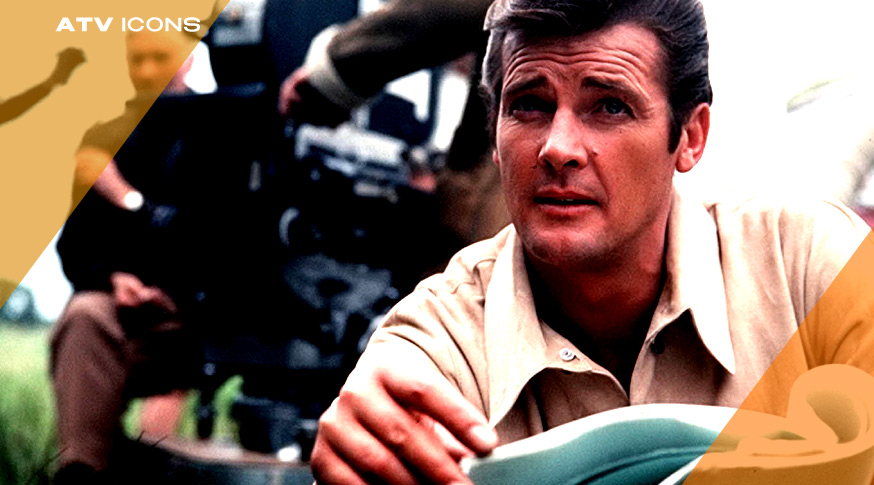
Roger Moore filming ‘The Saint’ / ITC/ATV
Indeed, the Simon Templar role allowed Moore to hone the suave, quipping demeanour he would later bring to James Bond. The Saint made Moore a household name and one of television’s highest-paid actors of the decade. By the end of the 1960s, however, Moore was eager to break free from the character’s halo. After seven years, he had begun to tire of the repetitive nature of the role.
He starred in two movies back-to-back that allowed him to stretch beyond ‘Simon Templar typecasting’. The first was Crossplot (1969), a light espionage caper, and the second was the psychological thriller The Man Who Haunted Himself (1970). In the latter movie Moore delivered what many consider one of his finest performances, playing a businessman who believes he has a doppelgänger. This film gave Moore a chance to display dramatic range beyond the breezy heroics he was known for. “It was one of the few times I was allowed to act,” Moore later said of the role, noting that many critics and fans consider it his very best performance.
Telly mogul Lew Grade lured Moore back to ITV for a high-profile adventure series, despite Roger initially turning the show down saying he didn’t want to do anymore TV. Grade urged him to do it ‘for Britain, and The Queen, the country needs the money!’
In The Persuaders! (1971–1972), Moore teamed up with American movie star Tony Curtis. The show followed two millionaire playboys – Roger as English aristocrat Lord Brett Sinclair and Tony as brash Bronx millionaire Danny Wilde – solving crimes in glamorous European locales. Moore not only starred in The Persuaders! but also produced it, and he was rewarded with a then-record salary for a TV actor – reportedly £1 million for the series.
This made him one of the highest-paid actors on television in the world at that time. The Persuaders! was a stylish mix of action and humour, it achieved cult success in Europe, though it ran for only one series which was perfectly timed as unbeknownst to Moore, he was about to step into the most iconic role of his career on the big screen.
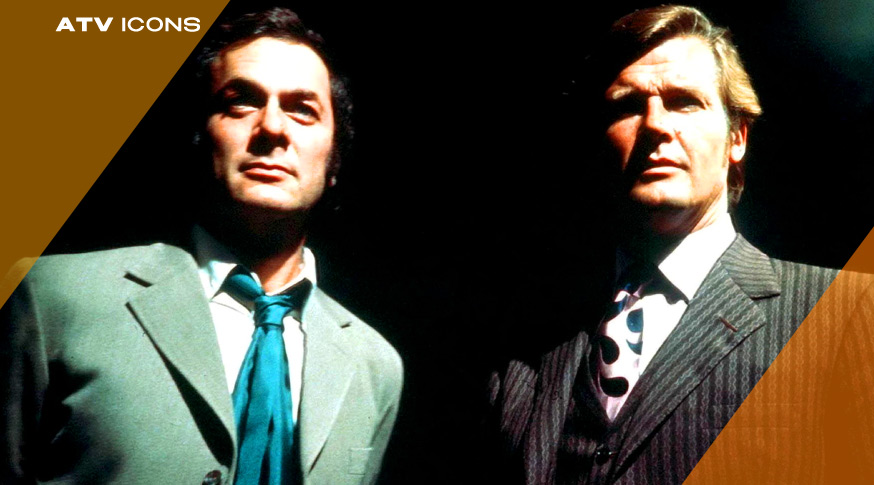
Tony Curtis with Roger on The Persuaders! / ITC/ATV
In August 1972, Roger was officially announced as the new James Bond, succeeding Sean Connery in the legendary role of Agent 007. He was 44 years old when cast, making him (at that time) the oldest actor to debut as James Bond. Moore would go on to portray Bond in seven feature films over the next 12 years, beginning with Live and Let Die (1973) and ending with A View to a Kill (1985). His run also included The Man with the Golden Gun (1974), The Spy Who Loved Me (1977), Moonraker (1979), For Your Eyes Only (1981), and Octopussy (1983).
Roger Moore’s interpretation of James Bond differed notably from that of his predecessors. The 1970s had ushered in a more light-hearted, escapist tone in Bond adventures, and Moore’s portrayal perfectly matched this shift. On screen, his Bond was a seasoned, debonair playboy – less a cold assassin and more a gentleman spy with a quick quip ready. The scripts leaned into his strengths, providing outrageous gadgets and sarcastic one-liners that he delivered with a twinkle in his eye. “My personality is different from previous Bonds. I’m not that cold-blooded killer type, which is why I play it mostly for laughs,” Moore once explained.
Off-screen, he approached the role with self-deprecating humour and pragmatism. He famously remarked that James Bond could hardly be considered a true spy since “everybody knows he’s a spy – and what drink he orders!”. At 57, Moore retired from the role of 007 in December 1985, he felt it was time to bow out as he became increasingly aware of the age gap between himself and his Bond girls; “The leading ladies were young enough to be my granddaughter, and it becomes disgusting,” he quipped.
Throughout the 1970s and early 1980s, even as he was portraying 007, he found time to star in or lend his talents to other films across various genres; he headlined the gold-mining adventure Gold (1974), shot on location in South Africa, and co-starred with Lee Marvin in the World War I-era action film Shout at the Devil (1976). In the late ’70s, he appeared in war ensemble films like The Wild Geese (1978) – playing a mercenary alongside Richard Burton and Richard Harris, led the escapist World War II caper Escape to Athena (1979) and the commando thriller North Sea Hijack (1979), and reunited with some Wild Geese colleagues in The Sea Wolves (1980).

Roger Moore with The Saint Cars and Bond Girl Valerie Leon at the Elstree Studios / Issued to ATV by Elstree Studios
One of Moore’s most memorable non-Bond roles was a comedic turn that actually spoofed his own 007 image. In the hit ensemble comedy The Cannonball Run (1981), a car-race caper packed with stars, Roger played a character named Seymour Goldfarb Jr. – a self-parodying millionaire who pretends he is Roger Moore (and drives a silver Aston Martin resembling Bond’s). It was a sly, humorous performance that showed Moore was unafraid to poke fun at himself.
In the 1990s, he appeared in a few films such as Bullseye! (1990), a crime comedy reuniting him with Michael Caine, and took a villainous turn opposite Jean-Claude Van Damme in the action film The Quest (1996). He also made a cameo in the Spice Girls’ movie Spice World (1997), hamming it up as a secretive millionaire, and had a humorous role in the rom-com Boat Trip (2002).
As he entered his seventies, Moore stepped back acting, though he appeared on television as a chat show guest or documentaries. A notable late-career moment came full circle with The Saint when Roger filmed a small supporting part in a 2013 pilot for a new version of the show which aired as a TV film in 2017. He also toured with a one-man stage show, An Evening with Roger Moore, sharing stories and reflections on his life and career to appreciative live audiences.
Outside of acting, Sir Roger Moore devoted much of his later life to humanitarian work, emerging as a passionate advocate for children’s welfare. His close friend Audrey Hepburn, who had become a UNICEF Goodwill Ambassador in the 1980s, inspired him to get involved. “I might be best known for playing James Bond, but my role as Goodwill Ambassador for UNICEF is the one I am most passionate about,” Moore once said. In 1991, he was appointed a UNICEF Goodwill Ambassador, a role he embraced wholeheartedly and would occupy for over 25 years.
He was an active voice for animal welfare in his later years, teaming with groups like PETA to campaign against cruelty to animals. In 2009, PETA UK named him their Person of the Year in honour of these efforts.

Roger Moore during a charity promotion for UNICEF / Image supplied to ATV by UNICEF
Roger Moore’s personal life had its share of romance and drama, as he married four times and navigated the ups and downs of celebrity relationships. His first marriage was to Doorn Van Steyn, an ice skater and fellow RADA student. They married in 1946 however Moore’s fledgling acting career put strain on the couple. They eventually divorced in 1953. That same year, he married his second wife, Welsh singer Dorothy Squires, who was a popular entertainer and 12 years older than him. Roger and Dorothy’s marriage was tempestuous and passionate. By 1961, Moore had begun an affair with Italian actress Luisa Mattioli, this effectively ended his marriage to Squires, though a protracted legal separation ensued. Squires refused to grant a divorce for years, finally relenting in 1969 – later that same year Roger married Luisa.
The couple enjoyed a long marriage (over two decades) and had three children together: a daughter, Deborah Moore (born 1963), who followed in her father’s footsteps to become an actress; and two sons, Geoffrey Moore (born 1966) and Christian Moore (born 1973). In 1993, Roger was diagnosed with prostate cancer – a scare that he described as “life-changing” and which prompted him to reassess many aspects of his existence. Around the same time, he developed feelings for a longtime friend of the family, Kristina “Kiki” Tholstrup, a Swedish-born Danish socialite. Moore and Mattioli separated in 1993, and after a period of difficulty, the marriage was officially dissolved in 2000 with a private settlement.
Kristina became his fourth and final wife in 2002. He was 74 and she 61 at the time of their marriage. By all accounts, this union brought Moore great happiness and stability in his later years. He praised Kiki for her calm, caring nature, saying he relied on her completely and that theirs was “a tranquil relationship” with no arguments. Kiki had two children from a previous marriage, and Moore became a supportive stepfather to them as well. The couple made their home in Monaco and Switzerland, enjoying a quieter life away from the spotlight even as Moore maintained his charitable activities and occasional public appearances.
Sir Roger Moore’s life came to a close on 23 May 2017, when he died in Switzerland at the age of 89 after a brief battle with cancer. Fans mourned the loss of the man who had embodied their hero on screen and who had also done so much good off screen. Moore was laid to rest in Monaco, and is survived by his wife Kristina, his three children, and several grandchildren. In 2012, looking back on his career and philanthropy, Roger summed up his journey with characteristic modesty and warmth: “I’ve been enormously fortunate. And I’ve tried to give something back.”

The Saint Neon at Elstree Studios / Issued to ATV by Elstree Studios

